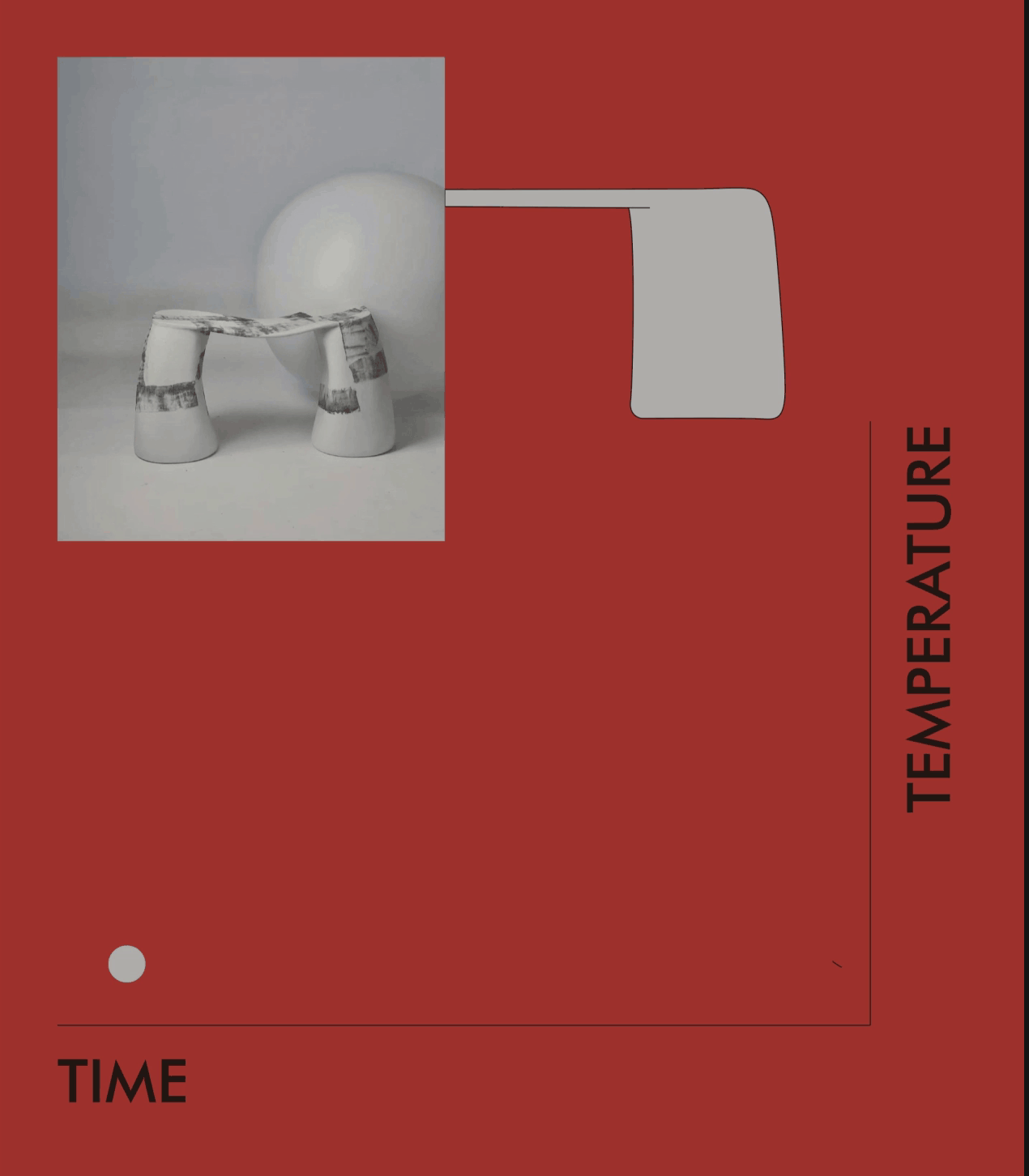ZHEKAI.ZHANG




Ceramic Bench
catalyseat
This project explores the transmaterial translation of traditional Chinese tie-dye craft into ceramic. Originally developed for textiles, the rich diffusion and unpredictable patterning of tie-dye serve as the visual and conceptual inspiration. The design begins with a critical inquiry: Can this millennia-old chromatic technique be reimagined through high-temperature ceramic media?

Experiment on tie-dyed fabrics and slip
Texture and finishing test
Tie-dyed fabrics are affixed onto the raw ceramic body using clay slip. During high-temperature firing, the organic fibers volatilize while the pigments fuse with the mineral-rich ceramic matrix, leaving ghostly imprints and blurred contours. This technique merges printing, burning, and mineral chemistry into a single step of transformation.
Rooted in the idea of form follows process, the stool’s deformation is not corrected but curated. The base structure is designed to allow controlled distortion during firing. The seat scale enables the textile-induced patterns to fully emerge, while the deforming body introduces subtle ergonomic cues and expressive tensions.
_JPG.jpg)





Unexpected effects—such as fine ash-like black striations—are embraced as part of the design logic. These marks, caused by the combustion and fusion of fabric pigments with glaze components, contribute a quality of material narrative and temporal residue, which are often absent in standardised ceramic processes.
Catalyseat is not merely a product, but a speculative platform questioning binaries like tradition vs. contemporaneity or control vs. emergence. By relocating authorship from the designer to the process itself, this project asserts the epistemic value of material behaviour in contemporary design discourse.



